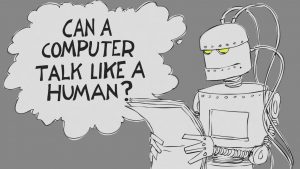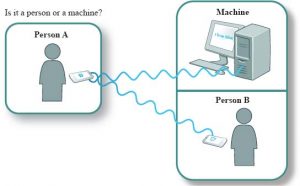Turing Test in Artificial Intelligence

The Turing Test is an easy method of deciding whether a computer can demonstrate human intelligence. A machine has displayed human intelligence if it can converse with a human without being identified as a machine. Alan Turing, a mathematician and computing pioneer, proposed the Turing Test in a paper published in 1950. It has been a driving force behind artificial intelligence theory and creation (AI).
Computing’s rapid advancements are now apparent in many facets of our lives. We now have algorithms that can instantly convert one language to another, robots that can clean an entire house in minutes, finance robots that can build customized financial portfolios, and mobile technologies that monitor our health and fitness levels. Much of these have become relatively routine. The pioneers in the field of artificial intelligence are now at the forefront of destructive technology.
Alan Turing is the pioneer of this destructive technology: artificial intelligence. During World War II, this British mathematician created some of the fundamental computer science principles when looking for a quicker way to decipher German messages. He became involved in artificial intelligence after the war.

Turing started his 1950 paper by raising the question, “Can machines think?” He then suggested a test to assist humans in answering the query. The examination takes place in a judge-led interrogation session. An individual and a computer program are the test subjects, and they are concealed from view. Based on their interaction nature, the judge has a conversation with both parties and tries to decide which is the person and which is the machine. Turing implies that if the judge is unable to differentiate between the two, the machine has shown human intelligence.
The Turing Test has its critics, but it stays a benchmark for artificial intelligence project performance. More than one human judge interrogates and converses with both participants in an updated Turing Test version. If more than 30% of the judges believe the machine is a human after five minutes of discussion, the project is deemed a success.
Source
Panova, E., Rogers, B. S., Tkatchuk, B. R., & Partida, B. D. (2021, March 9). Which AI has come closest to passing the Turing test? Dataconomy. https://dataconomy.com/2021/03/which-ai-closest-passing-turing-test/
The Turing Test (Stanford Encyclopedia of Philosophy). (2020, August 18). Stanford Encyclopedia of Philosophy. https://plato.stanford.edu/entries/turing-test/
Saygin, A. P., Cicekli, I., & Akman, V. (2000). Turing test: 50 years later. Minds and machines, 10(4), 463-518.
